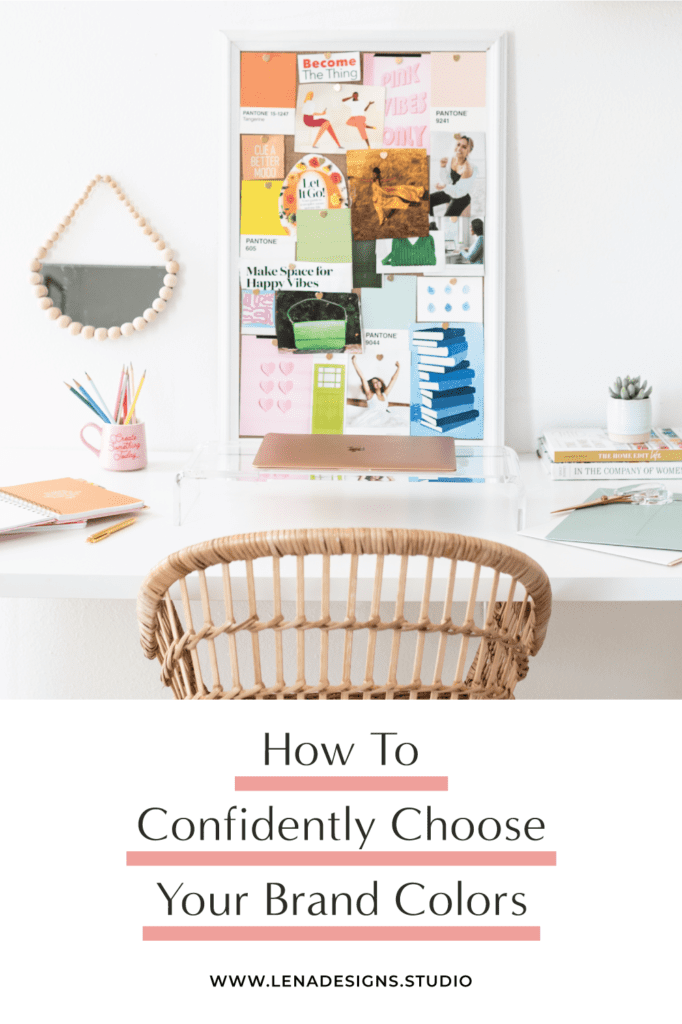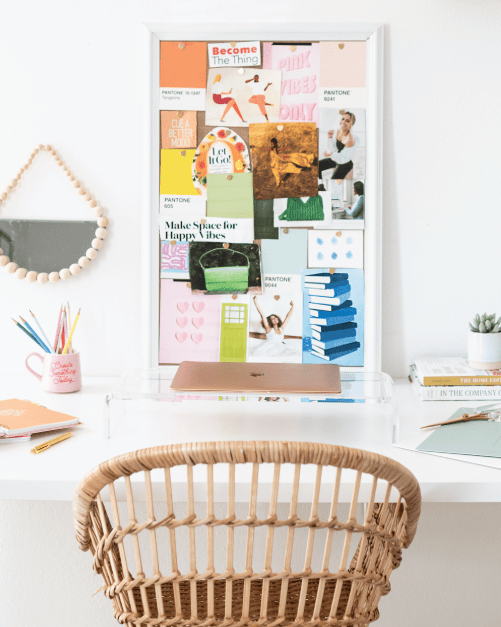Colors are the silent storytellers of your brand, conveying messages and emotions without words. What do your brand colors say about you?

We all have a favorite color. Royal Purple, Moss Green, or Bermuda Blue, maybe. What’s yours? When you think of your favorite color, does it make you feel a certain way or trigger a specific memory for you?
What is it about our favorite colors that make us feel that particular way?
It all comes down to psychology!
Every company has a color scheme that is a way to show off your brand’s personality. Choosing brand colors is one of the many marketing tasks that new business owners tend to overexert themselves with.
It might seem like it is one of *the* most important things to get right when you’re starting out, and you’re right–choosing the right color palette is never just a matter of aesthetics. So when you aren’t sure how to make your choices, it’s easy to get it wrong.
Colors affect everything- they have meanings that can be evocative and inspirational and will tell your story. Whether you want to evoke feelings of nostalgia, create a sense of comfort, or abstractly communicate something about your brand, choosing the right colors can help you create a unique and memorable brand.
The Psychology of Brand Colors
Colors affect everything – they have meanings that can be evocative and inspirational and will tell your story. Whether you want to evoke feelings of nostalgia, create a sense of comfort, or abstractly communicate something about your brand, choosing the right colors can help you create a unique and memorable brand.
Why Do Brand Colors Matter?
Brand colors are so important to our businesses because color is fundamental to our experience of the world. Although colors themselves are a combination of reflected light and the function of our human eyes, the way we see color is ultimately based on perception.
Colors tend to affect us in different ways, and that is why we have personal preferences for a certain color, especially for clothes, cars, houses, and even businesses. As humans, we are visual creatures and can be persuaded by the way something looks, whether it is an object or a website. Some of this is based on our anatomy, but colors can also be associated with certain cultural beliefs or practices. For example, blue is said to have a calming effect in many cultures. However, in India, blue is associated with death as it is the color of Hindu mourning clothing. So, when it comes to marketing and brand design, these preexisting associations need to be considered to ensure you communicate the right messaging to your audience. This is called color psychology.
Choosing Your Brand Colors
As a business owner, don’t worry about combing through a deep study of psychology; understanding your own choices, though, will help you create a stronger, more profitable brand.
In the beginning, we often go with what comes to mind, what our favorite color is, or what we think looks good. But those are not the right reasons. So how do you start choosing the right colors then?
The Meaning Behind Colors
Let’s start with what some popular colors mean:
- Red – Passion, energy, excitement, provocative, love, stimulating
- Pink – Romance, friendship, compassion, sweet, innocent, youthful
- Hot Pink – Playful, high-energy, festive
- Orange – Whimsy, energy, activity, persuasive, warm, stimulation
- Yellow – Cheerful, optimistic, energetic, innovative
- Chartreuse – Bold, sharp, enthusiastic, optimistic, creative, motivation
- Green – Growth, health, freshness, lively, harmony, ambition
- Aqua – Refreshing, youth, babies, dreamy, light
- Blue – Calm, dependable, loyal, credible, influential, tranquility
- Navy Blue – Professional, nautical, royal, confident, reflective, conservative
- Baby Blue – Calm, quiet, patient, relaxed, water, youthful
- Purple – Royalty, wealth, luxury, wisdom, magic, creativity
- Violet – Contemplative, mystery, intuitive
- Magenta – Practical, logical, spiritual
- Brown – Honest, earthy, organic, wholesome, traditional, reliable, friendly
- Black – Sophistication, power, modern, elegance, classic
- White – Clean, simple, clear, good, safe, innocent
- Gold – Divine, luxurious, successful, sophisticated, expensive, courageous, wealth
- Silver – Classy, stylish, modern
- Grey – Intelligence, industrial, classic, quality, neutrality, efficient, sophisticated
Define Your Brand Identity
First and foremost, it’s essential to gain a deep understanding of your brand’s essence. This foundational step sets the stage for the entire process of selecting your brand colors.
What do you stand for? What are your key values? What kind of people are your customers? What is the message you want to deliver to them? (If you need help with this step, let’s chat!)
Choose Your Palette
Second, start by choosing one or two colors that will be able to deliver that message – those two colors will be your primary and secondary brand colors. Then, build around those. Keeping your audience in mind, look around at different websites’ color palettes, Pinterest boards, magazines, etc., that your audience also has an interest in, and generally, just do some research. Be mindful of common competitors’ colors as well as you go in order to maintain uniqueness. If you aren’t confident in your color pairing abilities, there are tons of tools available online for building out your color palette!
Once your palette is set, make sure to use your color palette throughout your brand materials with consistency that will be recognizable across any media – from internet ads to business cards.
In Conclusion
Your brand palette can make or break your brand. So, if you’re launching a new business or rebranding an existing one, I hope this helps you understand how colors influence our perceptions of products, materials, people, services, messages, and more. Your brand’s color scheme can definitely be the difference between pulling in new clients and making them stay or getting lost in the busy marketplace that is the Internet.
If you’re looking to strengthen or define your brand identity, I help women entrepreneurs just like you build strong, well-designed brands that confidently communicate who they are. Schedule a free Project Fit Call with me today!

For further reading on the history of color and color psychology, here are a few books I love:
The Secret Lives of Colors – Kassia St. Clair and Werner’s Nomenclature of Colours- Patrick Syme
P.S. This post contains affiliate links so I’ll receive a small commission from any purchases using my link.

